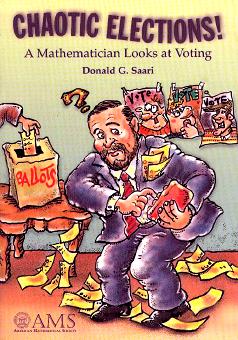This is a list of paradoxes, grouped thematically. Note that many of the listed paradoxes have a clear resolution. — see Quine's Classification of Paradoxes.
Logical (except mathematical)
These paradoxes have in common a contradiction arising from self-reference.
Berry paradox: The phrase "the first number not nameable in under ten words" appears to name it in nine words.
Curry's paradox: "If this sentence is true, the world will end in a week."
Epimenides paradox: A Cretan says "All Cretans are liars".
Exception paradox: "If there is an exception to every rule, then every rule must have at least one exception, excepting this one" ...is there an exception to the rule that states that there is an exception to every rule?
Grelling-Nelson paradox: Is the word "heterological", meaning "not applicable to itself," a heterological word? (Another close relative of Russell's paradox.)
Hegel's paradox: "Man learns from history that man learns nothing from history."
Intentionally blank page: Many documents contain pages on which the text "This page is intentionally blank" is printed, thereby making the page not blank.
Liar paradox: "This sentence is false." This is the canonical self-referential paradox. Also "Is the answer to this question no?"
The Y combinator in the lambda calculus and combinatory logic has been called the paradoxical combinator since it is related to the self-referential antinomies.
Petronius' paradox: "Moderation in all things, including moderation."
Quine's paradox: "yields a falsehood when appended to its own quotation" yields a falsehood when appended to its own quotation.
Paradox of the Court: A law student agrees to pay his teacher after winning his first case. The teacher then sues the student (who has not yet won a case) for payment.
Russell's paradox: Does the set of all those sets that do not contain themselves contain itself? Russell popularized it with the Barber paradox: The adult male barber who shaves all men who do not shave themselves, and no-one else.
Richard's paradox: We appear to be able to use simple English to define a decimal expansion in a way which is self-contradictory. Self-referential
Ship of Theseus (a.k.a. George Washington's or Grandfather's old axe): It seems like you can replace any component of a ship, and it will still be the same ship. So you can replace them all, or one at a time, and it will still be the same ship. But then you can take all the original pieces, and assemble them into a ship. That, too, is the same ship you started with.
Sorites paradox: One grain of sand is not a heap. If you don't have a heap, then adding only one grain of sand won't give you a heap. Then no number of grains of sand will make a heap. Similarly, one hair can't make the difference between being bald and not being bald. But then if you remove one hair at a time, you will never become bald. Vagueness
See also: Category:Mathematics paradoxes
Apportionment paradox: Some systems of apportioning representation can have unintuitive results due to rounding
- Alabama paradox: Increasing the total number of seats might shrink one block's seats.
New states paradox: Adding a new state or voting block might increase the number of votes of another.
Population paradox: A fast growing state can lose votes to a slow growing state.
Arithmetic paradoxes: Proofs of obvious contradictions; for example, proving that 2=1 by writing a huge expression and dividing by another expression that is zero.
Arrow's paradox/Voting paradox You can't have all the attributes of an ideal voting system at once.
Benford's law: In lists of numbers from many real-life sources of data, the leading digit 1 occurs much more often than the others.
Condorcet's paradox: A group of separately rational individuals may have preferences which are irrational in the aggregate.
Elevator paradox: Elevators can seem to be mostly going in one direction, as if they were being manufactured in the middle of the building and being disassembled on the roof and basement.
Inspection paradox: Why you will wait longer for that bus than you should.
Interesting number paradox: The first number that can be considered "dull" rather than "interesting" becomes interesting because of that fact.
Intransitive dice: You can have three dice, called A, B, and C, such that A is likely to win in a roll against B, B is likely to win in a roll against C, and C is likely to win in a roll against A.
Lindley's paradox: tiny errors in the null hypothesis are magnified when large data sets are analyzed, leading to false but highly statistically significant results
Low birth weight paradox: Low birth weight and mothers who smoke contribute to a higher mortality rate. Babies of smokers have lower average birth weight, but low birth weight babies born to smokers have a lower mortality rate than other low birth weight babies. (A special case of Simpson's paradox.)
Missing dollar paradox: Faulty logic makes it appear as if a dollar from a restaurant bill has gone missing. Not in the same class as the others.
Statistical paradox: It is quite possible to draw wrong conclusions from correlation. For example, towns with a larger number of churches generally have a higher crime rate — because both result from higher population. A professional organization once found that economists with a Ph.D. actually had a lower average salary than those with a BS — but this was found to be due to the fact that those with a Ph.D. worked in academia, where salaries are generally lower. This is also called a spurious relationship.
Will Rogers phenomenon: the mathematical concept of an average, whether defined as the mean or median, leads to apparently paradoxical results — for example, it is possible that moving an entry from an encyclopedia to a dictionary would increase the average entry length on both books.
Smallest number paradox describes how a rolling object should be able to attain a velocity of the smallest positive number. Mathematical and statistical
Mathematical and statistical
See also: Category:Probability theory paradoxes
Berkson's paradox: a complicating factor arising in statistical tests of proportions
Bertrand's paradox (probability): Different common-sense definitions of randomness give quite different results.
Birthday paradox: What is the chance that two people in a room have the same birthday?
Borel's paradox: Conditional probability density functions are not invariant under coordinate transformations.
Boy or Girl: A two-child family has at least one boy. What is the probability that it has a girl?
Monty Hall problem: An unintuitive consequence of conditional probability. Essentially the same as the Three Prisoners Problem.
Necktie Paradox : A wager between two people seems to favour them both. Very similar in essence to the Two-envelope paradox.
Simpson's paradox: An association in sub-populations may be reversed in the population. It appears that two sets of data separately support a certain hypothesis, but, when considered together, they support the opposite hypothesis.
Sleeping Beauty problem: A probability problem that can be correctly answered as one half or one third depending on how the question is approached.
Three cards problem: When pulling a random card, how do you determine the color of the underside?
Two-envelope paradox: You are given two indistinguishable envelopes and you are told one contains twice as much money as the other. You may open one envelope, examine its contents, and then, without opening the other, choose which envelope to take. Infinity
Banach–Tarski paradox: Cut a ball into 5 pieces, re-assemble the pieces to get two balls, both of equal size to the first.
Gabriel's Horn or Torricelli's trumpet: A simple object with finite volume but infinite surface area. Also, the Mandelbrot set and various other fractals are covered by a finite shape, but have an infinite perimeter (in fact, there are no two distinct points on the boundary of the Mandelbrot set that can be reached from one another by moving a finite distance along that boundary, which also implies that in a sense you go no further if you walk "the wrong way" around the set to reach a nearby point).
Hausdorff paradox: There exists a countable subset C of the sphere S such that SC is equidecomposable with two copies of itself.
Coastline paradox: the perimeter of a landmass is in general ill-defined
Smale's paradox: A sphere can, topologically, be turned inside out.
Missing square puzzle: Two similar figures appear to have different areas while built from the same pieces.
No Shortcuts paradox: The length of the hypotenuse in a right triangle is not shorter then the sum of the two axis-parallel legs, i.e., the direct connection between two points (which should amount to the euclidean distance) is not shorter than a path with segments that are orthogonal to each other (which amounts to the Manhattan distance). (See this reference) Geometry and topology
Geometry and topology



 College career
College career See also
See also Control of derivative works
Control of derivative works

 Venus
Venus

